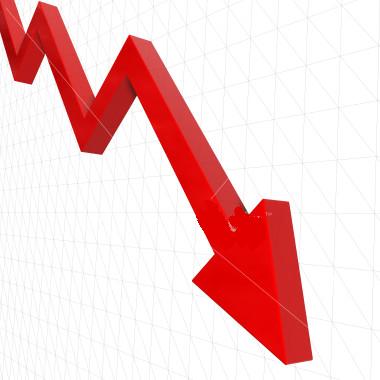Vivek Kaul
Good decision making is also a function of access to good data. The quality of economic data in India has improved significantly over the years, but it still leaves a lot to be desired. Allow me to explain.
In the Mid Year Economic Analysis released by the ministry of finance in December 2014 it was stated: “There are stalled projects to the tune of Rs 18 lakh crore (about 13 percent of GDP) of which an estimated 60 percent are in infrastructure.”
The Economic Survey which was also released by the ministry of finance today states: “The stock of stalled projects at the end of December 2014 stood at Rs 8.8 lakh crore or 7 per cent of GDP.” The Economic Survey number is lower by Rs 9.2 lakh crore.
The question is how did the stock of stalled projects change so much in a matter of little over two months? The Mid Year Economic Analysis was released on December 19, 2014. Both these documents would have been authored by the Chief Economic Adviser Arvind Subramanian. Guess, only he can tell us why there is such a big difference in the stalled projects data between the two documents.
Nevertheless, if we were to ignore this huge difference and concentrate just on the number put out by the Economic Survey, there is some good news on the stalled projects front.
The Economic Survey defines stalling of projects as a “a term synonymous with large economic undertakings in infrastructure, manufacturing, mining, power, etc.”
The stalling rate of projects has gone up over the last few years. In 2008, the stalling rate was 4% i.e. for every Rs 100 worth of projects under implementation, Rs 4 worth of projects were stalled. For the private sector the stalling rate was 5%.
As of the end of December 2014, the overall stalling rate was 10.3%, whereas the number for the private sector stood at 16%. Hence, for every Rs 100 worth of projects under implementation, Rs 10.3 worth of projects have been stalled. For the private sector Rs 16 worth of projects out of Rs 100 worth of projects under implementation have been stalled.
Interestingly, “the data shows that manufacturing and infrastructure dominate in the private sector, and manufacturing dominates in total value of stalled projects even over infrastructure. The government’s stalled projects are predominantly in infrastructure.”
This has been the “leading reason behind the decline in gross fixed capital formation”. As investopedia.com points out: “Capital formation refers to net additions of capital stock such as equipment, buildings and other intermediate goods. A nation uses capital stock in combination with labour to provide services and produce goods; an increase in this capital stock is known as capital formation…Generally, the higher the capital formation of an economy, the faster an economy can grow its aggregate income. Increasing an economy’s capital stock also increases its capacity for production, which means an economy can produce more. Producing more goods and services can lead to an increase in national income levels.”
Hence, if economic growth has to return (as per the new GDP series it already has) the stalling rate of projects needs to fall, so that it leads higher capital formation and better incomes. The Economic Survey points out that things may have already started to improve on this front. “The good news is that the rate of stalling seems to have plateaued in the last three quarters. Moreover, the stock of stalled projects has come down to about 7 per cent of the GDP at the end of the third quarter of 2014-15 from 8.3 per cent the previous year,” the survey points out. The stalling rate has fallen from around 11% in December 2013 to 10.3% in December 2014.
While this is good news, the stalling rate still needs to come down dramatically before a substantial impact is seen on economic growth. In fact during the period 2006 to 2008, the stalling rate varied between a little over 2% and 4%. It needs to be brought down to that kind of level.
Further, the question is why have so many projects been stalled? The Economic Survey provides the answer: “It is clear that private projects are held up overwhelmingly due to market conditions and non-regulatory factors whereas the government projects are stalled due to lack of required clearances.”
The government clearances can come thick and fast, if the government wants them to. As the Survey points out: “Clearing the top 100 stalled projects will address 83 per cent of the problem of stalled projects by value.”
Nevertheless, there is not much hope for the private sector. What has not helped the private sector is the fact that it is terribly over-leveraged (i.e. it has taken on a massive amount of debt in comparison to the equity that it has). “An unambiguous fact emerging from the data is that the debt to equity for Indian non-financial corporates has been rising at a fairly alarming rate,” the Survey points out. This is something that cannot be set right overnight.
The declining stalling rate of projects offers some hope on the economic front, but the larger mess still remains.
The column originally appeared on www.firstpost.com on Mar 3, 2015
(Vivek Kaul is the writer of the Easy Money trilogy. He tweets @kaul_vivek)

